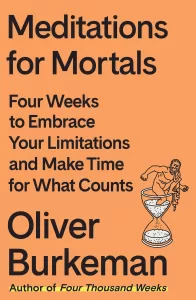Book Review: “Recruit Rockstars”
Book: Recruit Rockstars by Jeff Hyman
Reviewer: Bobby Powers
My Thoughts: 8 of 10
Hyman built his recruiting expertise through creating four companies, working for two global executive search firms, and hiring over 3,000 people. Hyman shares that knowledge in his new book Recruit Rockstars, which has drawn praise from business icons like former Twitter CEO Dick Costolo and Techstars founder David Cohen. Even though I'm not a recruiter, this book taught me valuable insights on how to source talent and create a work culture that allows "rockstar" employees to do their best work. This book is a fantastic manual for executives, mid-level managers, and recruiters alike.
Takeaways from the Book
The Importance of Recruiting
- “Recruiting great people is without a doubt the most important thing in business.”
- “According to the 2016 Conference Board CEO Challenge Survey, attracting and retaining talent is the number one concern of CEOs, regardless of their company size or industry.”
- “Here’s the scary statistic: The national batting average of hires who meet or beat the hiring manager’s expectations two years after being hired is .500. In other words, 50 percent. That’s right...no more accurate than the flip of a coin.”
- “90 percent of business problems are actually recruiting problems in disguise.”
- “Countless studies peg the cost of a bad hire at three times the annual compensation of that particular employee.”
- “One of the biggest mistakes that managers make is to treat people like commodities. I understand that growth companies are intensely focused on finding and keeping customers, but if you behave as if employees are interchangeable widgets, you’ve lost the game before you even take the field.”
- “Now that we’ve hit record-low unemployment, talent is at a premium, Thus, the biggest impediment to growth is the scarcity of talent, particularly ‘Rockstars,’ in the labor market.”
- “You can either spend time on the front end, carefully finding and recruiting Rockstars, or you can spend it on the back end in the form of micromanagement, inefficiencies, and ultimately, firings, in a cycle that keeps repeating itself until your haphazard process serendipitously lands a keeper.”

Author Jeff Hyman
Rockstars
- “In my world, Rockstars are those in the top 5 percent of performers at the compensation level that we can afford, across two dimensions: competencies and DNA...Rockstar is shorthand for the best talent you can get your hands on to ensure that your company thrives.”
- "Even more important than competencies, DNA is the most predictive element of success. It doesn't matter how competent a person is if their DNA doesn't match your company's ingrained DNA...By DNA, I'm referring to attributes that are hardwired at an early age and which rarely change over time, akin to genetic DNA. By the time we're eight years old, we are largely the person that we're going to be: detail-oriented, competitive, analytical, creative, etc. Those qualities will tell you much more about how a person will perform than last year's sales figures."
- “As the adage goes, it only takes one bad apple to spoil the bunch. A culture is an atmosphere created by the collective DNA of the individuals. Therefore, everyone in it is contributing to that culture—or detracts from it.”
- “If the role is important enough to exist, it’s important enough to have a Rockstar fill it. Yes, Rockstars will cost 20 percent more but can be two to three to ten times more effective than an average performer. Because of that effectiveness, you won’t need to hire as many. I have a saying when it comes to Rockstars: ‘Recruit five, get the results of ten, and pay them like eight.’”
- “The number one thing Rockstars look for is a challenge, be it a challenge in terms of career growth, trajectory, or job promotions. It’s even more important than money. Whether you’re the CEO or the leader of a department, your job is to create a culture that fosters and enables that.”
- “Just as your company’s products have a brand, so, too, does your company as an employer. It’s how people think about your company and what it’s like to work there. Market the hell out of your employer brand. Create stories to help prospective candidates visualize what it’s like to work there.”
- “Consider your candidate experience in the same way that sales and marketing execs consider customer experience.”
Recruit Only Rockstars
- “Heads of marketing invest months researching and developing a Customer Value Proposition. Then, they obsessively hand-craft the words to tell that story. The same applies in recruiting Rockstars. You, your head of talent, and your leadership team must research and refine a compelling Job Value Proposition. Why should Rockstars want to ‘purchase’ your job opportunity? Why should they choose to invest their precious years working for you?”
- “The position is secondary to the company, of course, because jobs have become so fluid. It’s important to show that the company is going places, and that the person who fills the job will be an essential part of the growth path. This isn’t just a job; it’s an investment in the ownership of something meaningful and rewarding. This is a bus you simply need to be on. And we’ll find the right seat together.”
- “Give the position a creative title. Rockstars want a title that reflects the importance of their work. Give it to them. Titles matter, and people act in accordance with the station to which they believe they belong; better to have them rise to a higher station than sink to a lower one. Director of Customer Service? Blah. Why not ‘Head of Making Customers Love Us?’ I’d be interested in that one.”
- “Best-in-class companies generate 50 percent of their hires from [employee referrals], yet most companies achieve less than half this rate. Employee referrals are the Holy Grail of recruiting. They deliver the highest quality of candidates, the shortest duration of search time, and the lowest cost-per-hire. The reason is simple: Rockstars attract Rockstars.”
- “A lack of clarity about the position’s needs is a fatal flaw. Understand up front what you’re looking for, so that you know if you find it during the interview. If you don’t have a Scorecard, there’s no way to gauge the interview, and if that’s the case, you’re wasting a lot of people’s time, including your own. I keep my Scorecard right in front of me as I interview. It’s a constant reminder of what I’m hunting for.”
- “According to a study by Google of its own recruiting history, four interviews is the optimal number. Four interviews reveal substantially more information than three, while a fifth adds barely any new value. Only one interviewer is necessary at a time.”
Grow Your Rockstars
- “As goes the first thirty days, so goes the employer/employee relationship.”
- “The first three to six months are when new hires are particularly susceptible to turnover...Companies lose 17 percent of their new hires within the first three months...This can be prevented, however. According to a 2014 study by Bamboo HR, 23 percent of people who left within the first three months said they wouldn’t have left if they’d just received clear guidance on their job responsibilities.”
- “The key is to remember a few things: one, even Rockstars need to be oriented, and two, during the crucial first few months, you’re still selling. The new employee doesn’t have much invested during the first month, so they’re watching to see two things: first, if you have your act together as an organization and second, how committed to you are to their long-term success.”
- “In addition to training on matters relating to the business, the on boarding period is also the time to understand your new hires’ aspirations. I tell my employees they’ve hopped on our company train and that my job as their manager is to keep them on our train for as long as possible. That said, I’ll acknowledge that it’s probably not going to be the last train they ride and that’s okay. Tell them that whether they stay two years, five years, or ten years, you want to maximize that time and make sure they learn and grow and see it as beneficial to their career. To do that, you need to understand their career aspirations. Find out where they want to grow.”
Think you’d like this book?
Other books you may enjoy:
- Work Rules by Laszlo Bock
- The Alliance by Reid Hoffman, Ben Casnocha, and Chris Yeh
- Who by Geoff Smart and Randy Street
Other notable books by the author:
- (None)






